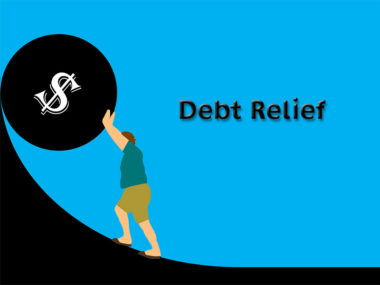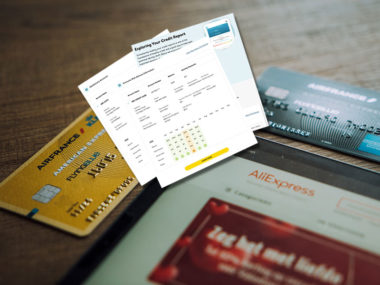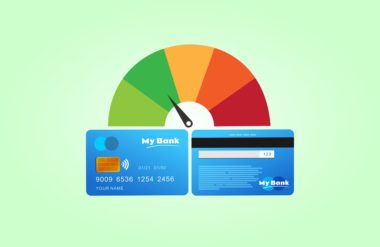
You have paid a debt in full when you have paid the total amount of the debt, including interest and any outstanding penalties or late fees.
When you make the final payment, you send the creditor or collections agency a “paid in full” letter, which gives them notice that you are making your last payment and requests their confirmation that all requirements of the debt are satisfied.
You will write in the letter that you expect the creditor or debt collector to take no further action against you regarding the debt. You should keep a copy of the paid-in-full letter and any other communications and documents connected to the debt.
Table of Contents
Why Did My Credit Score Drop?
There are many reasons why your credit score might drop when you finish paying off a debt. These temporary setbacks are related to the way credit bureaus calculate your score.
There are five key factors considered when determining your credit score:
- Your payment history accounts for 35% of your score. This metric doesn’t improve when you pay a debt in full because lenders do not remove the missed payments from your record. You need to write a letter of good will to ask for missed payments to be removed from your credit history.
- Your credit utilization accounts for 30% of your score. You may lose points on this metric if you close the account, since your total credit limit may decrease relative to owed amounts.
- The average age of your accounts makes up 15% of your score. Your score in this area may fall if you close the paid-in-full account, since the average age of your accounts will drop.
- Your credit mix accounts for 10% of your score. You may slip on this metric if you close the account. Your credit mix is a measure of the different types of accounts you have, including revolving accounts (credit cards) and fixed payment accounts (mortgages and auto loans).
- New credit accounts account for 10% of your score. Your performance on this metric is not likely to change after you have paid a debt in full.
As you may have noticed, paying off debt and closing an account generally leads to a drop in your score. If the debt was on a credit card, and you can pay it off without closing the credit card, keep it open to avoid this drop. Also, avoid opening new accounts unnecessarily, as they damage your score in the short term.
When Is a Debt Paid in Full?
A debt is paid in full when the total amount owed has been paid off. It is essential to note that this is different than when a debt is settled in full.
Paid in Full
A debt is paid in full when you have repaid the principal amount, all interest charges, and any fees and penalties on the account. When you pay a debt in full without missing a payment, your account is “in good standing,” and this status will remain on your credit report for 10 years after you close the account.
However, if you missed any payments, the missed payments will remain on your record from the date they become delinquent, even after you pay the debt in full. These missed payments will stay on your record for seven years.
Settled in Full
A debt is “settled in full” when you have paid the entire balance agreed upon with the creditor or collections agency. Note that this amount gets negotiated with the creditor or collections agency and is typically less than the total amount of the loan. You may negotiate to reduce the principal, the interest charges, or the fees and penalties.
When a debt gets settled in full, you do not have to make any further payments. Your credit score, however, will likely drop, because you did not pay the debt in full. The settlement will be on your record for up to seven years.
Will a Paid-in-Full Collection Help My Credit Score?
Paying a collection account in full may or may not help your credit score in the short term. It may make it difficult to repair a low score, depending on the circumstances.
For starters, if your lender uses an older scoring model, a collection will not be removed from your report after repayment. Newer scoring models (FICO 9 and VantageScore 3.0 and 4.0) ignore paid-in-full collections.
Generally, lenders for mortgages and other secured loans use older scoring models. That said, the older a delinquency gets, the less significant an impact it makes on your score. This is because newer data has a higher priority in these models. Delinquencies also disappear from your credit report after seven years.
Collection Removal
It’s possible to have a collection mark removed from your credit report, though the process is not always easy. The two main ways to remove a collection are:
- Write a goodwill letter to the creditor or debt collection agency requesting that they remove the record.
- Request a copy of your credit report and dispute inaccuracies to have them removed.
Your best chances of having a collection removed from your record are when they are inaccurate. A goodwill letter may or may not be effective, and it has no downside since the request will not go on your record. However, it is unlikely to work if you have severe delinquencies on your account.
How to Write a Paid-in-Full Letter
These are the steps that people usually take when writing a paid-in-full letter
- Write the date on the top of the page.
- Next, include your personal contact details: your name, address, and phone number. Make sure to have each on its own line.
- Write the creditor or debt collection agency’s contact details next. For this, you need only write their name and address. Make sure to have each on its own line.
- Write the heading of the letter. Usually, this is along the lines of “Re: [your account number].”
- Write an introduction. Usually, this is along the lines of ‘Dear Sir/Madam’ or ‘Attention Sir/Madam’ or something similar.
- Write the body of the letter. This includes the reason for composing the letter.
- You may add details like the amount of the debt owed, the date of the agreement, and the date on which you will make the final payment.
- If you send the payment along with the letter, you can point out that it is enclosed. You should also let the creditor know that you expect a written confirmation that the debt is paid in full.
- Finish the letter (usually with “Sincerely”) and include your signature and printed name (each on their own line).
Don’t forget to make and keep a copy of the letter and check for your records. This step is essential if there are any future disputes involving the debt.
Paid in Full Letter Sample
Date:
Name:
Address:
Phone #:Collection Agency/Creditor Name:
Collection Agency/Creditor Address:
Re: [Insert account number here]Dear Sir/Madam [or “To Whom It May Concern”],
I am attaching my final payment for the account referenced above. I request a written confirmation from you that this account is [paid in full/settled in full] according to the terms of our agreement on [insert date of agreement].
If I do not receive a written confirmation from you, I will consider this final payment as proof of your acceptance that the account referenced above is [paid in full/settled in full].
Now that the debt is paid in full, I do not expect to hear from you concerning it, except to confirm that it is paid in full. I will consider reporting any other communications concerning payment to the Federal Trade Commission and my state’s Attorney General, as well as take any legal action necessary.
Sincerely,
[Insert signature here]
[Insert printed name here]
Image Source: https://depositphotos.com/





